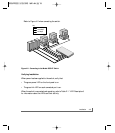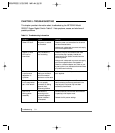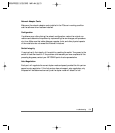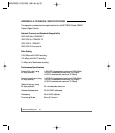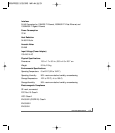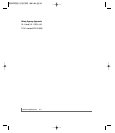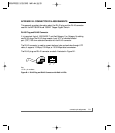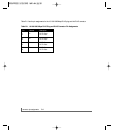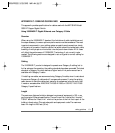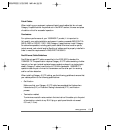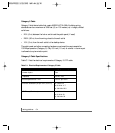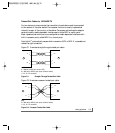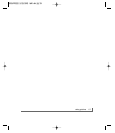
cabling guidelines C-2
Return Loss
Return loss measures the amount of reflected signal energy resulting from impedance
changes in the cabling link.The nature of 1000BASE-T renders this measurement
very important; if too much energy is reflected back on to the receiver, the device will
not perform optimally.
All four pairs of the twisted pair are used by 1000BASE-T, unlike 10BASE-T and
100BASE-TX, which use only two of the four pairs of wires within the Category 5.
It is important to ensure that all wires are tested.
The factors that will affect the return loss are
• the number of transition points, as there is a connection via an RJ-45 to another
connector, a patch panel, or a piece of equipment at each transition point.
• removal of the jacket that surrounds the four pairs of twisted cable. It is highly
recommended that, where RJ-45 connections are made, this is minimized to
1-1/4 inch (32 mm).
• pair untwist of any of the twisted pairs. It is important that this be minimized
to 3/8 inch (10 mm) where RJ-45 connections are made.
• cabling or bundling of multiple Category 5 cable.This is regulated by
ANSI/EIA/TIA-568A-3, and can adversely affect all parameters of the
cabling if not correctly implemented.
Near End Cross Talk (NEXT)
This is a measure of the signal coupling from one wire to another, within a cable
assembly, or among cables within a bundle. NEXT measures the amount of cross-talk
disturbance energy that is detected at the near end of the link—the end at which the
transmitter is located. NEXT measures the amount of energy that is “returned” to
the sender end.The factors that affect NEXT and cross talk are exactly the same as
outlined in the Return Loss section.The cross-talk performance is directly related to
the quality of the cable installation.



